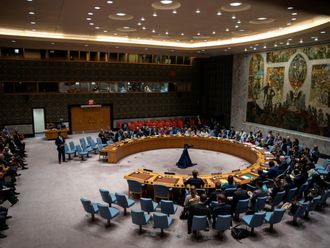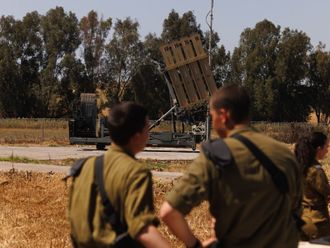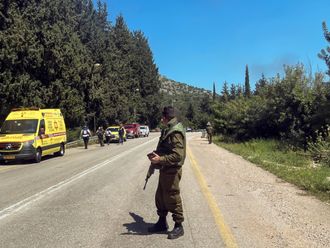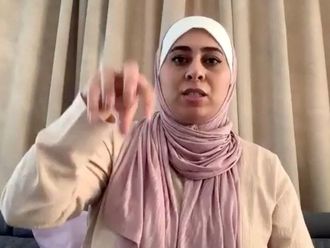Dubai: Iran’s military is not as strong as previously believed, according to a US think tank.
While Tehran has made major advances in building its ballistic and cruise missiles, as well as asymmetric forces, the report says Iran’s conventional military is aging.
“Sepending data shows that many of Iran’s conventional military foces are equipped with aging, mediocre weapons,” the Centre for Strategic and International Studies, said.
It said that Iran has not had access to modern weapons, since the fall of the Shah in 1979, compared to its Gulf neighbours, which have outspent Iran on military arsenal for decades.
According to the report, entitled “The Arab Gulf States and Iran: Military spending, modernisation, and the Shifting Military Balance”, GCC states spent between $95 to $128 billion for military purposes in 2017.
This is up to nine times what Iran has spent, which is estimated to be between $15 to $16 billion.
CSIS based its report on the analysis of two think tanks: The British International Institute of Strategic Studies and the Swedish International Peace Research Institute.
Although the authors of the report said that the collected data is based on unclassified data that have its limitations, the trends are likely to be correct.
While the actual total could be higher than the think tanks figures, Arab countries would still have the lead, said the report.
“Arab Gulf states spend far more on military forces than the 2 per cent of total GDP goal set by NATO, and far less that the 3.11 per cent estimate the US spends, and the 3.10 percent spent by Russia.”
Iran’s economy has been under a series of economic sanctions since 1979 from the US and the international community.
Today, Tehran is currently under American sanctions starting from November last year, which the US President Donald Trump said aimed to force Iran to change its policies in the region, including its support to militant groups, and development of ballistic missiles.
Though Iran is way behind its Arab neighbours in terms of military weapons, it has “exploited many tensions in the region to create a capabilities for asymmetric warfare”, the report said.
“While Iran may have lost the conventional arms race, it has exploited the civil wars in Iraq, Syria, and Yemen and divisions between Arab rulers to make significant gains in terms of expanded regional influence and strategic leverage,” the CSIC report said.
Most Arab countries accuse Iran of interfering in their own affairs and of attempting to disrupt regional security.
“Iran has three options: easing tension, negotiation or confrontation,” said Abdul Aziz Al Saqr, Chairman of the Jeddah-based Gulf Research Centre in an interview with Gulf News.
However, Tehran is focusing today on “negotiations and easing the tension”, especially with the Washington, he said.
Analysts in the region exclude the possibility of an American strike against Iran, particularly under the fragile security situation in many parts in the Arab region.
some believe, including Khattar Abu Diab from the Paris-based Council on Geopolitics and Perspectives, that Iran is expected to continue suffering under sanctions.
And because of its weakness in airpower and manoeuvre forces, Iran is expected to reject any attempt to give up its missile capabilities as part of any arms control agreement, according to researchers and analysts.
On the contrary, Iran “is placing a heavy emphasis on improving its missile forces to include systems with precision-guided conventional warheads,” said CSIS report, which described the Iranian missile arsenal as the “largest and most diverse in the Middle East”.











